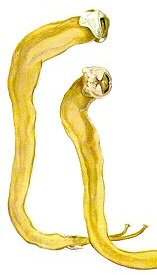February 9, 2021
Slideshows
February 9, 2021
I've been working on my slideshow WordPress plugin, and I think it is about finished. This took just a few minutes to do, with no problems:
The Mohawk
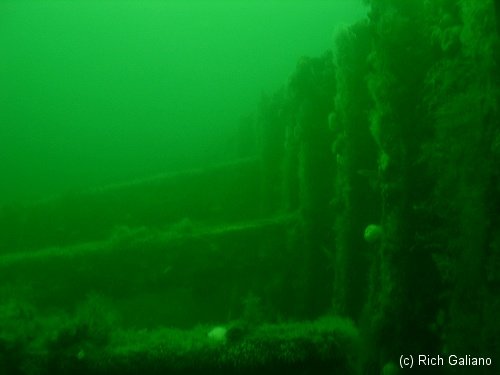
The port side of the hull near the bow. The lower part still stands, while the upper part has collapsed.

Fallen hull ribs near the bow.
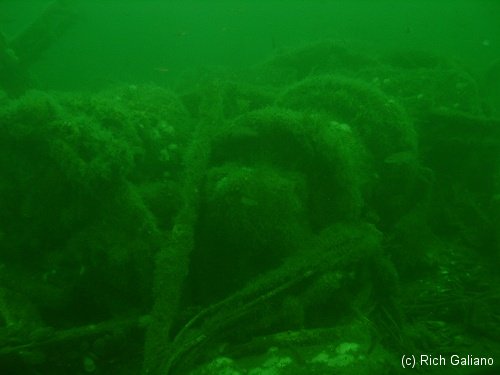
A large winch and machinery, perhaps for the anchors.
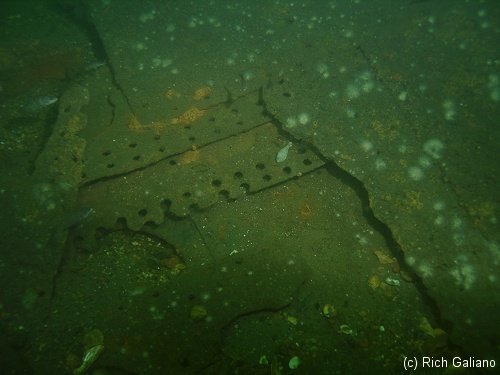
Empty rivet holes on hull plates now lying scattered across the bottom. The curved opening at lower-left looks like it might once have held a porthole.
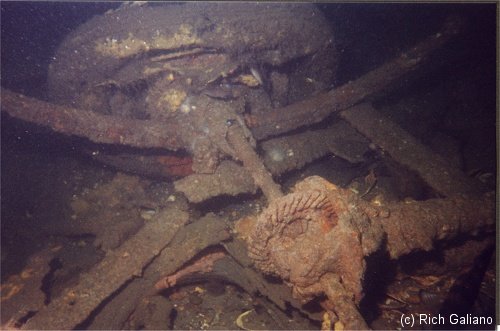
Rear axle, differential, leaf spring, rubber tire and wheel from a truck, near the bow. The cast iron differential casing has rotted away, but the steel spline gears remain.
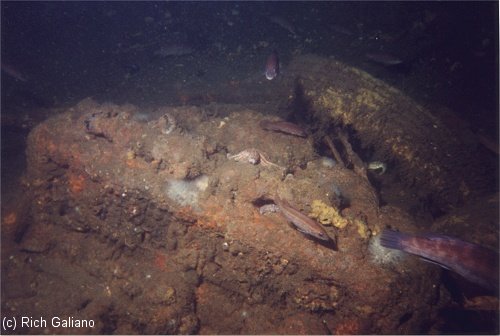
An old flathead-six truck engine, with one of the front wheels just behind. You can make out the intake runner, minus carburetor.

Amidships, the front (north) side of the half-buried boiler. There is a second boiler in front of this one, collapsed.
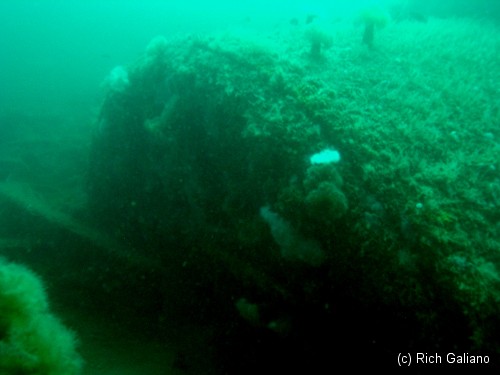
Amidships, the front (north) side of the half-buried boiler. There is a second boiler in front of this one, collapsed.
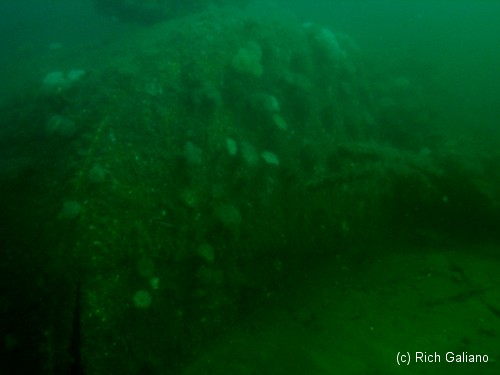
The back (south) side of the remaining boiler, showing caps for fire tubes. The front side of the boiler is solid. Note the large crack in the corner.
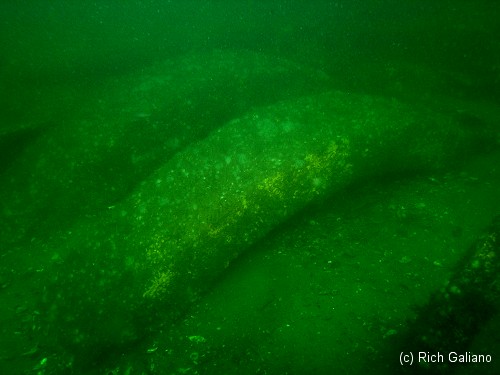
Looking forward at the main reduction gears, just behind the boiler.
These huge gears converted the high-speed of the steam turbines to the much lower speed of the propellers. From the geometry of the exposed portion, I estimate that they are approximately twelve feet in diameter, with about two feet exposed. That places the prop shaft about four feet below the sand, and the bottom of the hull more than 10 feet down. These gears would be connected to the propeller shaft, and surrounded by a casing and smaller drive gears. See marine engines for details of such an installation.
These huge gears converted the high-speed of the steam turbines to the much lower speed of the propellers. From the geometry of the exposed portion, I estimate that they are approximately twelve feet in diameter, with about two feet exposed. That places the prop shaft about four feet below the sand, and the bottom of the hull more than 10 feet down. These gears would be connected to the propeller shaft, and surrounded by a casing and smaller drive gears. See marine engines for details of such an installation.
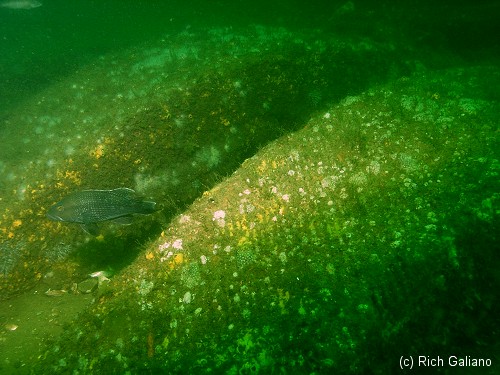
Close-up, with some of the marine growth wiped away to show the diagonal teeth.
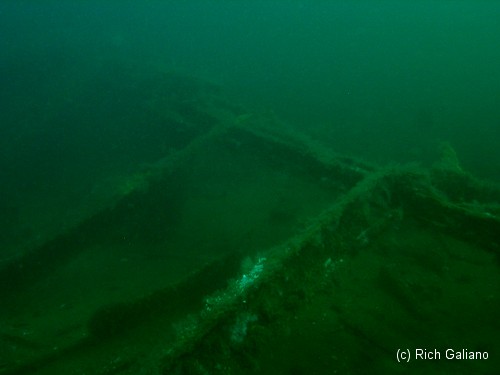
Moving aft (south) from the boiler along a crumpled framework. This reminds me of an overhead monorail, and is easily big enough to swim under.
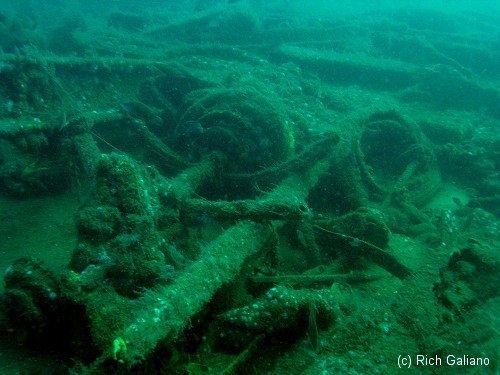
More car parts, near the stern.

The aft port side of the wreck is collapsed inward. This is plainly evident in the side-scan image above.
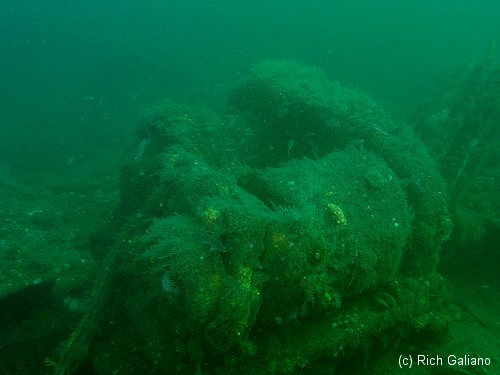
Some kind of heavy machinery.

The Mohawk is mostly just an incomprehensible jumble.
It takes a lot of diving to learn your way around this mess. I've been diving it and studying it about once a week all season (2004), and it's starting to make sense. For the casual diver without such experience, a wreck reel is strongly advised. If nothing else, you can use it as an upline once you realize that not using it from the start was a mistake.
It takes a lot of diving to learn your way around this mess. I've been diving it and studying it about once a week all season (2004), and it's starting to make sense. For the casual diver without such experience, a wreck reel is strongly advised. If nothing else, you can use it as an upline once you realize that not using it from the start was a mistake.
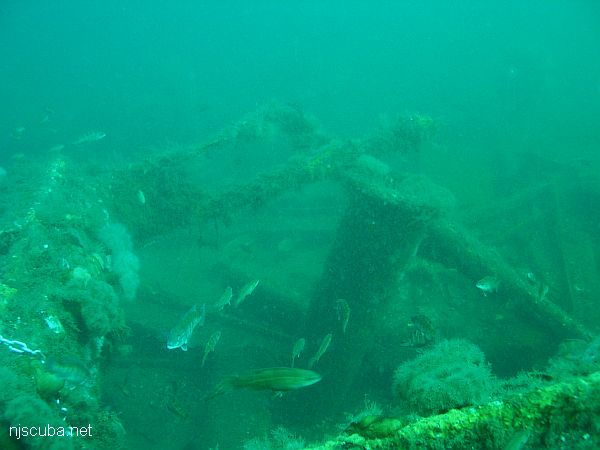
A scene at the extreme stern end of the wreck. For scale, the 'pipe' in the scene is actually a deck support, and is over a foot in diameter.
The Algol




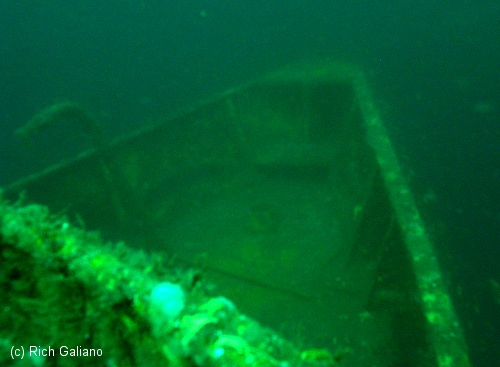
The bow, looking down over the rail of the starboard 40mm gun platform.

Looking down from the forward winch house at a doorway on deck, starboard side. Railings and catwalks are rusting away fast.
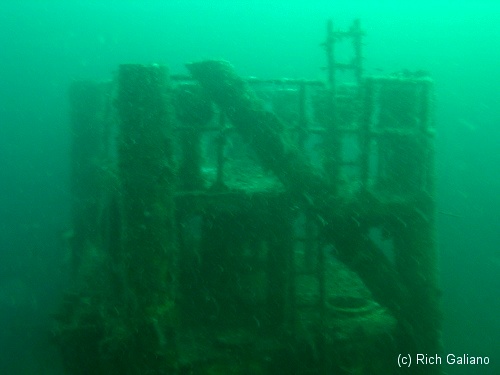
The cut-off mid-ships winch house, from the port side ...
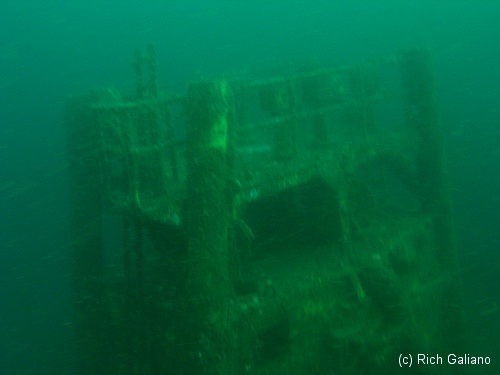
... and from some other side.
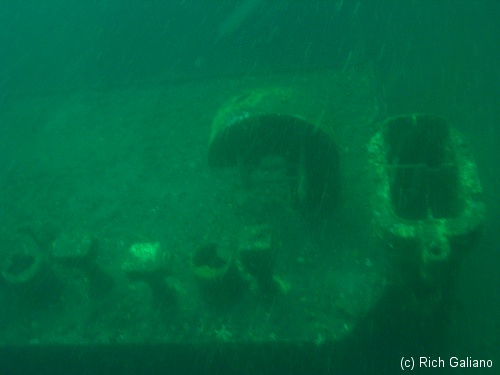
Looking down on ventilators while swimming aft. I'm not certain, but I think this is the small deckhouse on the port side near the mid-ships winch house. Marine snow streaks across these long exposures like driving rain.
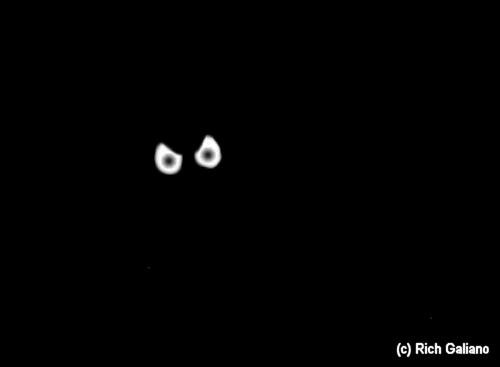
Looking down into the #3 cargo hold.
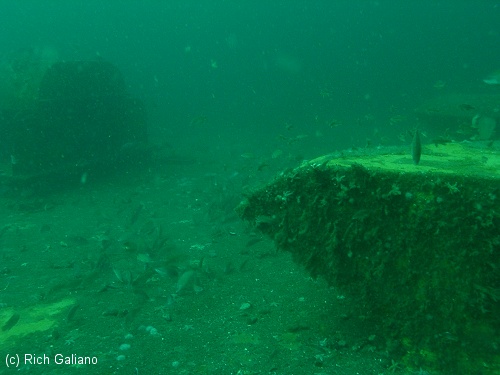
Various things on the roof of the superstructure, more ventilators, I think. Many an AOW student should recognize this spot.
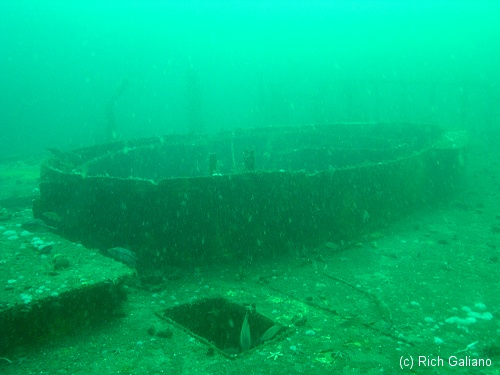
The cut-off smokestack, from the port side.
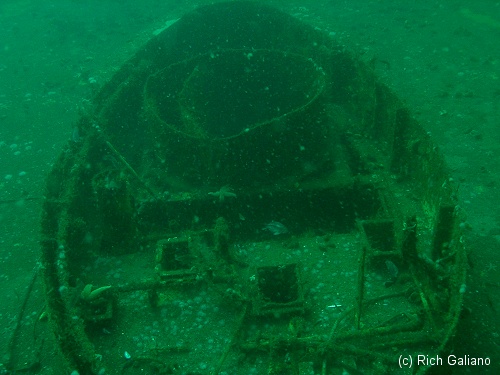
The cut-off smokestack, from in front. A small person could fit down the circular hole in the middle.
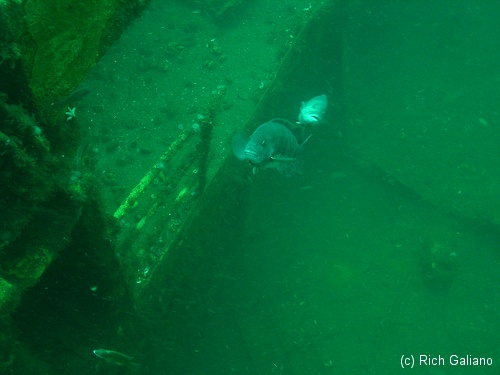
Looking down off the port bridge wing at the deck below. The leading cunner swam up and bit me a right after I took this picture. They really are little bastards.
Uncategorized, 02/9/21
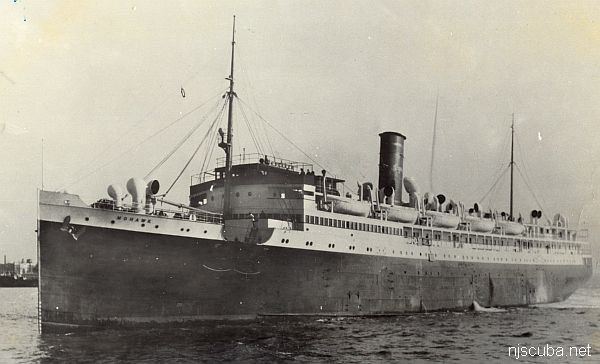
- Type:
- shipwreck, liner, USA, Clyde-Mallory Lines ( sailing under Ward Lines )
- Name:
- A tribe of Iroquoian Indians of the eastern New York area.
Three identical sisters were named Cherokee, Seminole, and Algonquin - Built:
- 1926, Newport News VA USA ( Newport News Shipbuilding & Drydock Co. )
- Specs:
- ( 387 x 54 ft ) 5897 gross tons, 163 passengers & crew
- Sunk:
- Thursday January 25, 1935
collision with Norwegian freighter Talisman - 45 casualties - Depth:
- 80 ft max
More: Mohawk ...
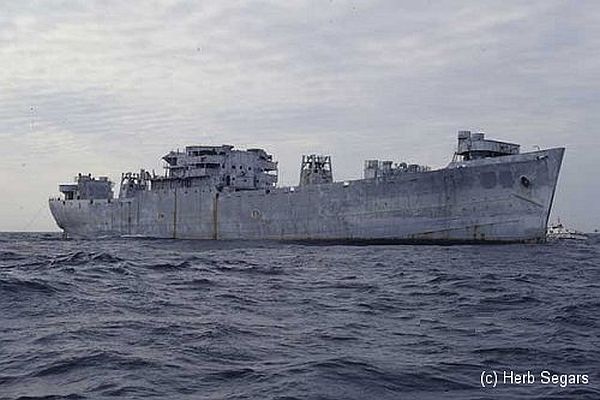
- Type:
- artificial reef, Andromeda class attack transport ( freighter ), U.S. Navy, also known as a "Victory Ship", although often incorrectly referred to as a Liberty Ship
- Name:
- One of a series of Navy transports named for stars;
Algol is a star in the constellation Perseus, also known as the Demon star. - Built:
- 1943; Oakland CA USA, as James Barnes
- Specs:
- ( 459 x 63 ft ) 13910 displacement tons, 429 crew *
* this figure almost certainly includes embarked Marines - Sponsor:
- Federal Aid in Sportfish Restoration
- Sunk:
- Thursday November 22, 1991 - Sea Girt Artificial Reef
- GPS:
- 40°06.545' -73°41.450'
- Depth:
- 145 ft +, starts at 70 ft, main deck at 110 ft
More: USS Algol AKA-54 ...
« Wayback Machine « » The Good Old Days »

